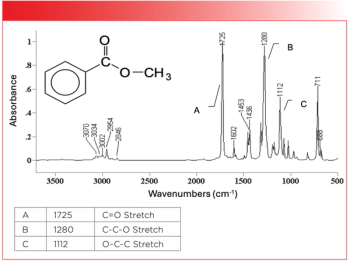
Screening for Long COVID Using Exhaled Breath Analysis
Boris Mizaikoff of the University of Ulm recently held a presentation on how analyzing a subject’s exhaled breath can help identify who is suffering from long COVID-19.
Boris Mizaikoff of the University of Ulm in Germany held a presentation at SPIE Photonics West 2024 on breath analysis as a tool for detecting long COVID-19 (1). Detecting SARS-CoV-2 virions (virus-like particles that do not contain RNA), in addition to other diseases like influenza, could be possible if passive sampling is conducted with used medical/KN95 masks, Mizaikoff said.
“Every time we put on a mask, we’re inhaling air, which means we’re trapping species from the outside world on the outside of the mask. When we’re exhaling, the inside [of the mask] is trapping everything we’re exhaling,” he said (1). Because of this, face masks can be a good tool for passive collection of breath.
Infrared (IR) spectroscopy, specifically IR-attenuated total reflectance (IR-ATR) spectroscopy is the main technique Mizaikoff uses to detect SARS-CoV-2. Using IR, his team identifies contamination on either side of a face mask. Those infected with SARS-CoV-2 left remnants of the virus inside their masks, while outside virus fragments indicated that someone was in an environment where the virus was present. This was all conducted with an overall accuracy of approximately 80%, Mizaikoff’s said in the presentation (1).
Detecting long COVID in patients proved to be a different task. For this, Mizaikoff and his team looked at face mask samples from patients with active COVID infections. 102 exhaled breath samples were studied; 30 were control subjects, 42 were from people infected with COVID-19, and 30 from people suffering from long COVID. When compared to healthy patients, there was a significant difference between those samples and those from long COVID sufferers. With that said, the experiment had 85% accuracy, though these numbers now hint that use of eNose technology should only be used for screening rather than diagnostic purposes.
Scientists are still learning more about long COVID. Long COVID is a systemic condition that can include chest pain, shortness of breath, organ damage, brain fog, and reproductive disorders. Additionally, 5–30%of individuals infected with COVID-19 will have symptoms that last more than 4 weeks (1). At least 65 million people worldwide have developed long COVID, with cases increasing daily.
Mizaikoff and his team are also working on a project known as IRENE, which combines IR and eNose systems for non-invasive exhalome analysis. These systems are meant to be compact and accurate in their findings, with the systems being tested in different areas. Ongoing clinical studies are happening in Mexico using IRENE systems, with the pilot study findings having 85.2% accuracy (1). Additionally, the team is looking into complimentary long COVID analysis, using IR-ATR spectroscopy to search for SARS-CoV-2 in blood, plasma, and saliva. Mizaikoff hopes that detecting SARS-CoV-2 will become an easier process, allowing more research to be done in how to combat this elusive condition.
Reference
(1) Mizaikoff, B. Harnessing Mid-Infrared Photonics: Detection of Long-COVID. In SPIE Photonics West, San Francisco, California, USA, January 30–31, 2024.
Newsletter
Get essential updates on the latest spectroscopy technologies, regulatory standards, and best practices—subscribe today to Spectroscopy.




